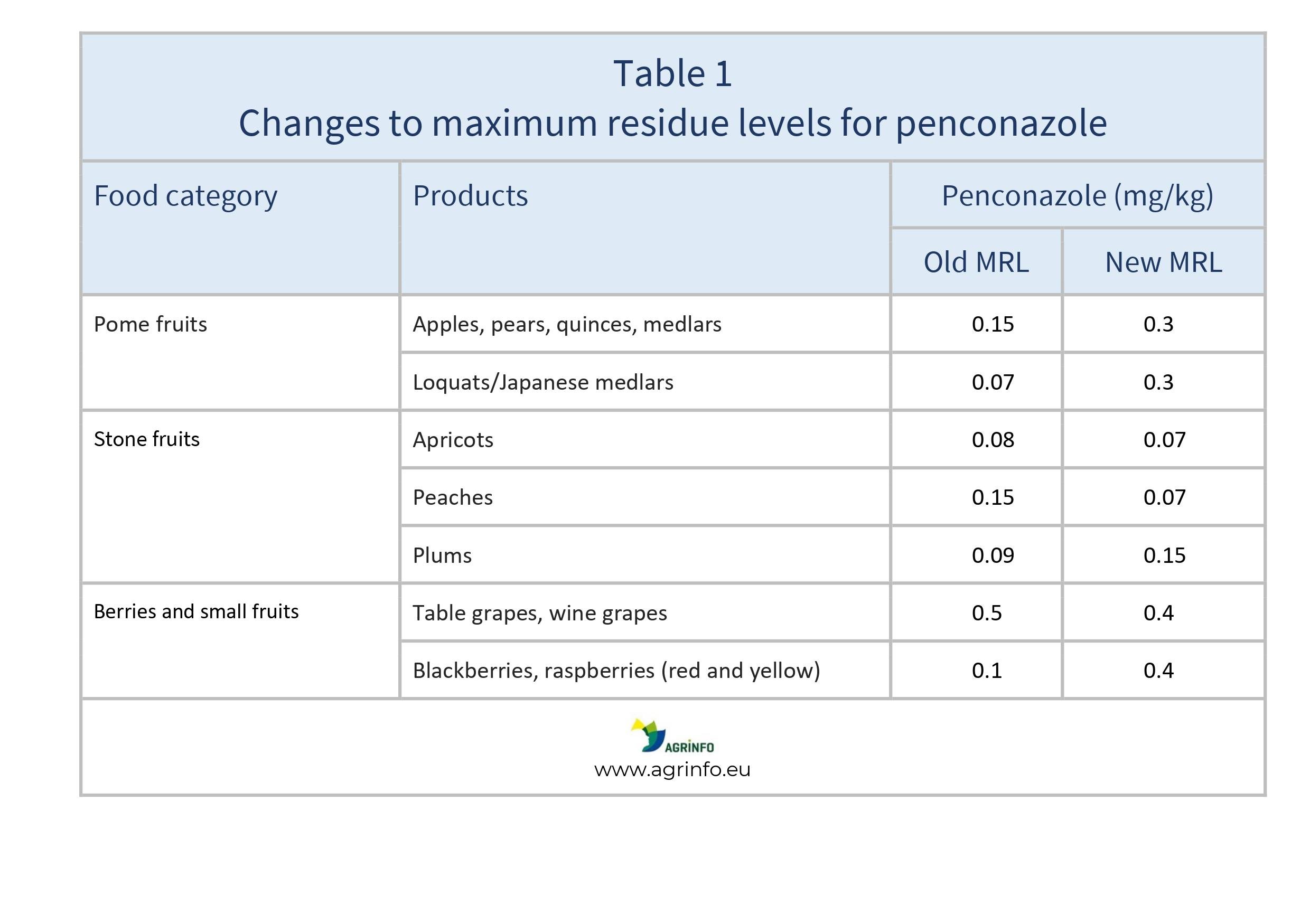Maximum residue levels for penconazole
- Pesticide MRLs
Summary
The European Union has amended the maximum residue levels (MRLs) for penconazole. The most significant impacts will potentially be on exports of apricots, peaches, and grapes.
EU amends penconazole MRLs, with impacts on apricots, peaches, and grapes
Commission Regulation (EU) 2025/195 of 3 February 2025 amending Annex II to Regulation (EC) No 396/2005 of the European Parliament and of the Council as regards maximum residue levels for fenbuconazole and penconazole in or on certain products
Update
The European Union has amended the maximum residue levels (MRLs) for penconazole. The most significant impacts will potentially be on exports of apricots, peaches, and grapes.
Impacted Products
Apples, pears, quinces, medlars, loquats/ Japanese medlars, apricots, peaches, plums, table grapes, wine grapes, blackberries, raspberries (red and yellow)
What is changing?
The EU has amended the MRLs for penconazole as summarised in Table 1.
Why?
The MRLs for penconazole were re-evaluated and adjusted after new trials addressed data gaps identified by the European Food Safety Authority (EFSA 2017). EFSA (2023) concluded that higher MRLs on pome fruits, plums, blackberries, and raspberries are safe, and that the MRLs for this substance can be maintained on cherries, gooseberries, tomatoes, aubergines, pumpkins, and watermelons, with no risk to consumers.
On certain other products, including apricots, peaches, and table and wine grapes, EFSA has recommended lower MRLs.
Timeline
The new MRLs apply from 24 August 2025.
Products imported before 24 August 2025 that comply with the old MRLs will not be removed from the EU market after that date, even if they do not comply with the new MRLs.
Recommended Actions
Suppliers of apricots, peaches, and grapes should review their use of penconazole and assess whether any changes will be needed to existing good agricultural practices (GAP).
Background
MRLs are set in accordance with the rules set out in Regulation 396/2005. For information on current MRLs for other substances, please consult the EU Pesticide Residues database.
Resources
EFSA (2017) Review of the existing maximum residue levels for penconazole according to Article 12 of Regulation (EC) No 396/2005. EFSA Journal, 15(6): 4853.
EFSA (2023) Evaluation of confirmatory data following the Article 12 MRL review and modification of the existing maximum residue levels for penconazole in various crops. EFSA Journal, 21(3): 7889.
Sources
Commission Regulation (EU) 2025/195 as regards maximum residue levels for fenbuconazole and penconazole in or on certain products
Tables & Figures

Source: based on Regulation 2025/195
Disclaimer: Under no circumstances shall COLEAD be liable for any loss, damage, liability or expense incurred or suffered that is claimed to have resulted from the use of information available on this website or any link to external sites. The use of the website is at the user’s sole risk and responsibility. This information platform was created and maintained with the financial support of the European Union. Its contents do not, however, reflect the views of the European Union.
EU amends penconazole MRLs, with impacts on apricots, peaches, and grapes
Commission Regulation (EU) 2025/195 as regards maximum residue levels for fenbuconazole and penconazole in or on certain products
What is changing and why?
The European Union has amended the maximum residue levels (MRLs) for penconazole as summarised in Table 1. The European Food Safety Authority (EFSA) reviewed the MRLs for this substance and concluded that higher MRLs on pome fruits, plums, blackberries, and raspberries are safe. MRLs on cherries, gooseberries, tomatoes, aubergines, pumpkins, and watermelons pose no risk to consumers and can be maintained.
EFSA has recommended lower MRLs on certain other products, including apricots, peaches, and table and wine grapes.
Actions
Suppliers of apricots, peaches, and grapes should review their use of penconazole and assess whether any changes will be needed to existing good agricultural practices (GAP).
Timeline
The new MRLs apply from 24 August 2025.
Products imported before 24 August 2025 that comply with the old MRLs will not be removed from the EU market after that date, even if they do not comply with the new MRLs.
Tables & Figures

Source: based on Regulation 2025/195
Disclaimer: Under no circumstances shall COLEAD be liable for any loss, damage, liability or expense incurred or suffered that is claimed to have resulted from the use of information available on this website or any link to external sites. The use of the website is at the user’s sole risk and responsibility. This information platform was created and maintained with the financial support of the European Union. Its contents do not, however, reflect the views of the European Union.
